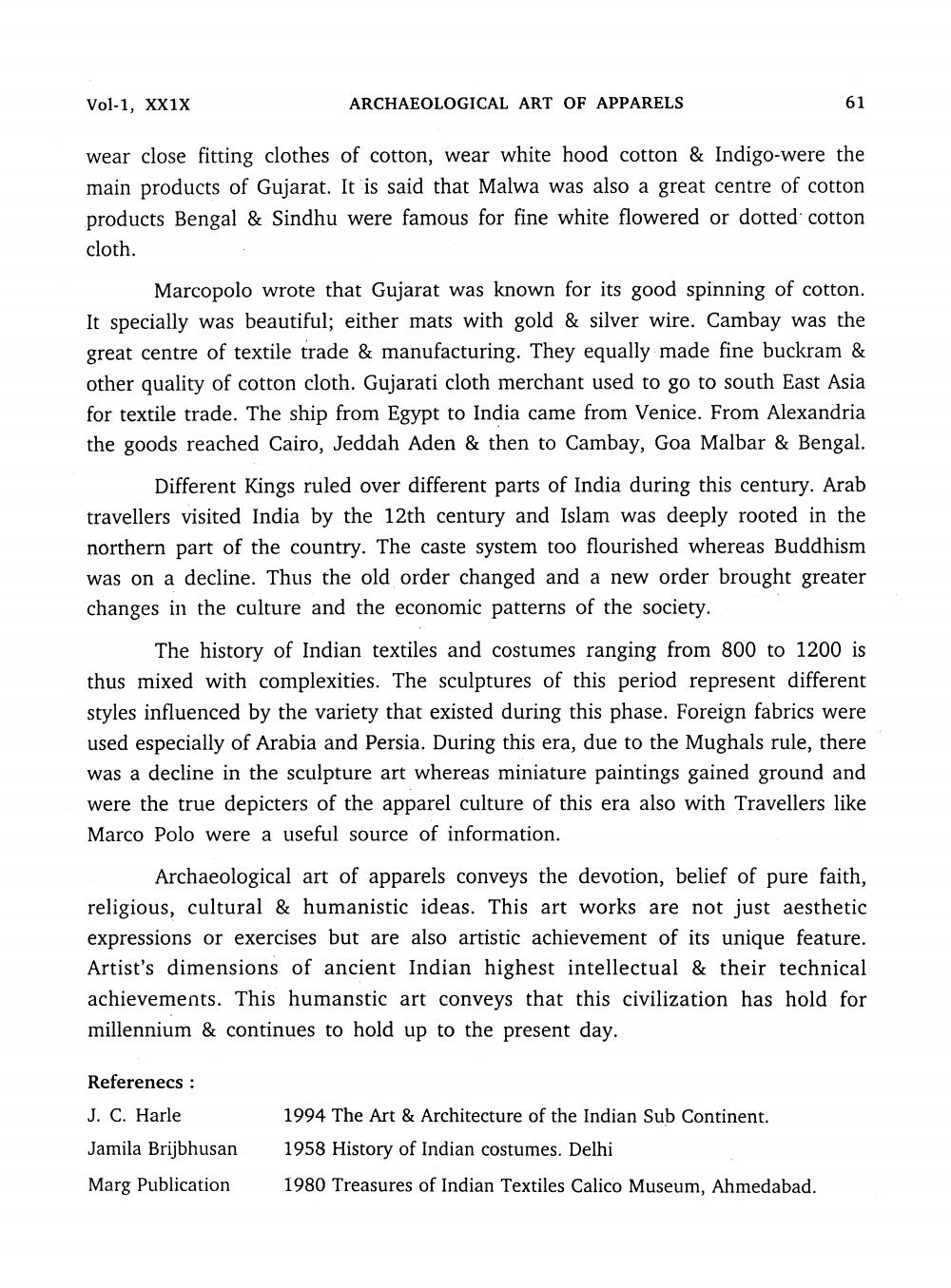________________
Vol-1, XX1X
ARCHAEOLOGICAL ART OF APPARELS
wear close fitting clothes of cotton, wear white hood cotton & Indigo-were the main products of Gujarat. It is said that Malwa was also a great centre of cotton products Bengal & Sindhu were famous for fine white flowered or dotted cotton cloth.
Marcopolo wrote that Gujarat was known for its good spinning of cotton. It specially was beautiful; either mats with gold & silver wire. Cambay was the great centre of textile trade & manufacturing. They equally made fine buckram & other quality of cotton cloth. Gujarati cloth merchant used to go to south East Asia for textile trade. The ship from Egypt to India came from Venice. From Alexandria the goods reached Cairo, Jeddah Aden & then to Cambay, Goa Malbar & Bengal.
Different Kings ruled over different parts of India during this century. Arab travellers visited India by the 12th century and Islam was deeply rooted in the northern part of the country. The caste system too flourished whereas Buddhism was on a decline. Thus the old order changed and a new order brought greater changes in the culture and the economic patterns of the society.
The history of Indian textiles and costumes ranging from 800 to 1200 is thus mixed with complexities. The sculptures of this period represent different styles influenced by the variety that existed during this phase. Foreign fabrics were used especially of Arabia and Persia. During this era, due to the Mughals rule, there was a decline in the sculpture art whereas miniature paintings gained ground and were the true depicters of the apparel culture of this era also with Travellers like Marco Polo were a useful source of information.
Archaeological art of apparels conveys the devotion, belief of pure faith, religious, cultural & humanistic ideas. This art works are not just aesthetic expressions or exercises but are also artistic achievement of its unique feature. Artist's dimensions of ancient Indian highest intellectual & their technical achievements. This humanstic art conveys that this civilization has hold for millennium & continues to hold up to the present day.
Referenecs : J. C. Harle Jamila Brijbhusan Marg Publication
1994 The Art & Architecture of the Indian Sub Continent. 1958 History of Indian costumes. Delhi 1980 Treasures of Indian Textiles Calico Museum, Ahmedabad.




